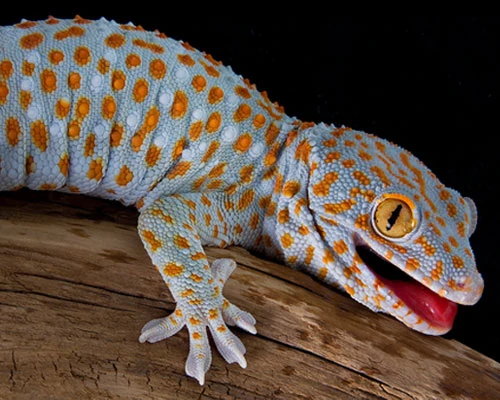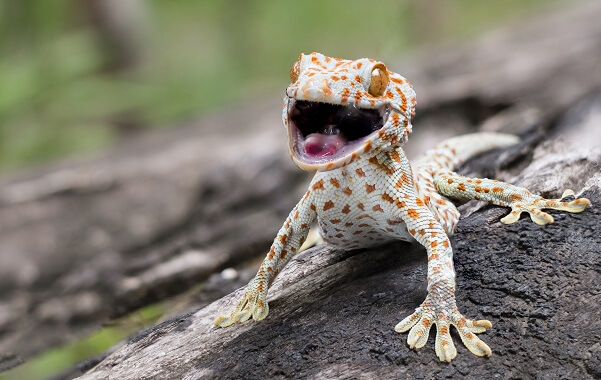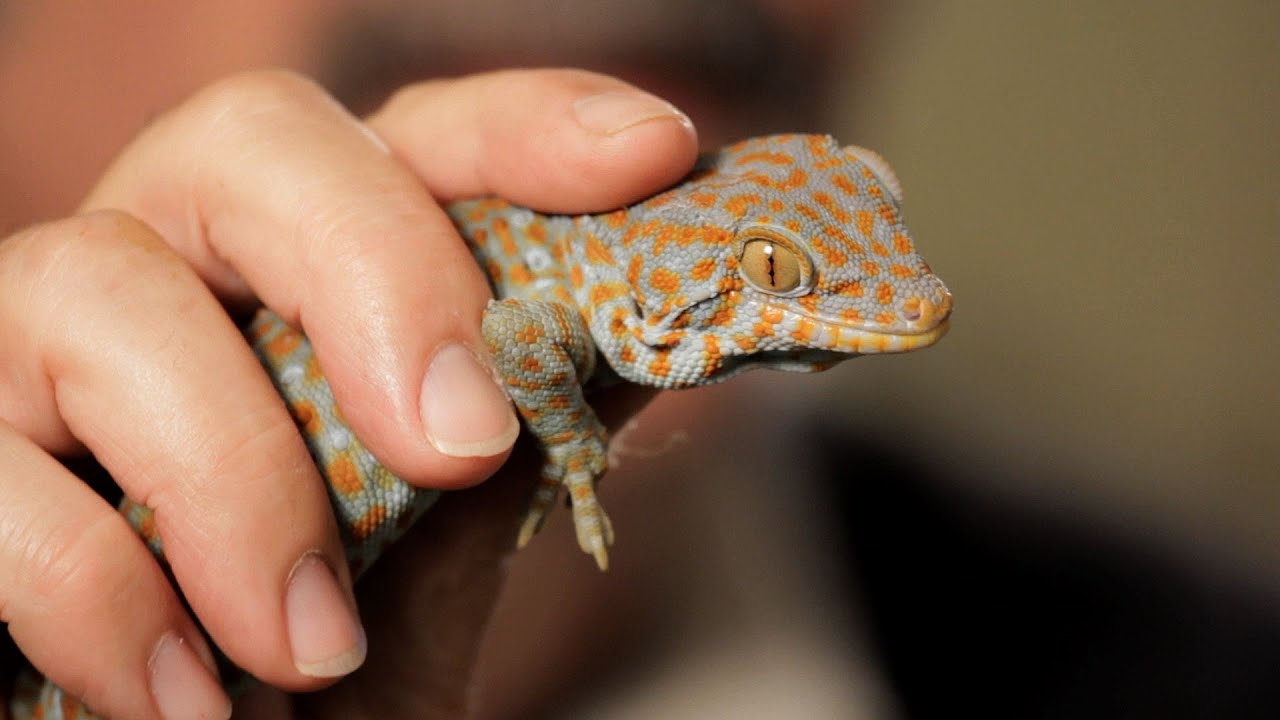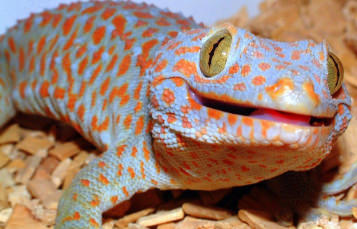When it comes to exotic pets, the Tokay Lizard, or Gekko gecko, is one of the most fascinating reptiles. Known for its striking colors and vocal nature, this large gecko has gained popularity among reptile enthusiasts. However, caring for a Tokay Lizard requires a deep understanding of its natural behaviors, environment, and specific needs. Whether you’re a seasoned reptile keeper or someone interested in owning a unique pet, this guide will provide you with all the necessary information about the Tokay Lizard, from its care to its natural habitat.
What is a Tokay Lizard?
Description and Scientific Classification
The Tokay Lizard is a species of large gecko native to Southeast Asia. It belongs to the Gekkonidae family and is scientifically known as Gekko gecko. These geckos can reach lengths of up to 15 inches (38 cm), with males typically being larger than females. They are known for their vibrant coloration, often featuring a gray or blue body with bright orange or red spots. This distinct pattern, combined with their bold appearance, makes them highly sought after as exotic pets.
Tokay Lizards are nocturnal, meaning they are most active during the night. Their vocalizations are also one of their distinguishing traits—Tokay geckos produce a loud “to-kay” sound, which is where their name comes from.

Natural Habitat
In the wild, Tokay Lizards are primarily found in tropical rainforests throughout Southeast Asia, including countries like Thailand, Vietnam, Indonesia, and the Philippines. They are arboreal, meaning they spend most of their time in trees, and they prefer humid environments with plenty of vegetation and water sources.
Due to their adaptability, Tokay Lizards have also been spotted in urban areas, where they inhabit buildings and homes. However, in certain parts of the world, such as Florida, they are considered an invasive species because they outcompete native wildlife for food and shelter.
Tokay Lizard Behavior
Temperament and Vocalizations
Tokay Lizards are known for their feisty and defensive behavior. Unlike many other geckos that are relatively docile, Tokay geckos can be aggressive, especially if they feel threatened. Their strong bite and vocal warnings serve as defensive mechanisms, making them a challenging pet for beginners. However, with proper handling and patience, some individuals can become more tolerant of human interaction over time.
Their vocalizations are unique—Tokay Lizards emit a loud, repetitive “to-kay” sound, especially during the breeding season. These calls can be startling for new owners, but they are a normal part of the Tokay’s behavior.

Nocturnal Habits
Being nocturnal, Tokay Lizards are most active at night, hunting for insects and small invertebrates. They use their excellent climbing abilities to navigate trees and rocks in search of prey. During the day, they prefer to hide in dark, sheltered spots to rest and avoid predators. This natural behavior should be considered when setting up an enclosure, as they will need plenty of hiding places to feel secure.
How to Handle a Tokay Lizard Safely
Handling a Tokay Lizard can be tricky due to their defensive nature. If you’re considering taming your Tokay, patience is key. Here are a few tips:
- Start slowly: Allow your gecko to get used to your presence before attempting to handle it.
- Use gloves: Tokay geckos have strong bites, so it’s best to wear protective gloves, especially in the beginning.
- Be gentle: Never force the lizard to be held; this will only increase its stress and aggression.
- Consistency is key: Regular, gentle handling over time may help your Tokay become more accustomed to human interaction, though not all individuals will fully tame.
How to Care for a Tokay Lizard as a Pet
Enclosure Setup
A proper enclosure is essential to keep your Tokay Lizard healthy and happy. Since they are arboreal, the cage should be taller than it is wide, allowing the lizard to climb and explore. A 20-gallon vertical terrarium is the minimum size recommended for a single Tokay, though larger enclosures are preferable.
Inside the terrarium, you’ll need the following:
- Substrate: Coconut fiber or orchid bark works well, as it retains moisture and mimics the lizard’s natural habitat.
- Climbing branches: Add a variety of branches and vines to provide the lizard with climbing opportunities.
- Hiding spots: Include several hides at different heights, as Tokay geckos like to stay hidden during the day.
- Water dish: A shallow dish of fresh water should always be available, though Tokays also enjoy misting to hydrate.

Heating, Lighting, and Humidity
Tokay Lizards thrive in temperatures between 75°F and 85°F during the day, with a slight drop at night. Use a heat lamp to maintain a warm basking area, but ensure that the enclosure doesn’t overheat.
While Tokays don’t require UVB lighting as some reptiles do, it can still be beneficial for their overall health. Aim for a humidity level of 60% to 80%, as they come from tropical environments. Daily misting or an automatic misting system will help maintain the proper humidity.
Tokay Lizard Diet
In the wild, Tokay Lizards are opportunistic hunters, feeding on insects, small birds, and even rodents. In captivity, their diet should consist mainly of live insects such as crickets, roaches, and mealworms. You can also offer pinky mice or small lizards as an occasional treat, though this is not necessary for a balanced diet.
To ensure proper nutrition, dust the insects with calcium and vitamin D3 supplements before feeding. This helps prevent common reptile health issues such as metabolic bone disease.
Cleaning and Maintenance of Enclosures
A clean enclosure is crucial to prevent the buildup of bacteria and to keep your lizard healthy. Remove uneaten food and waste daily, and perform a deep clean of the terrarium every two weeks. This involves replacing the substrate, disinfecting decorations, and thoroughly cleaning the walls and glass.
Tokay Lizard Lifespan and Health
Common Health Issues
With proper care, Tokay Lizards can live up to 10 years in captivity, with some even reaching 20 years. However, they are prone to certain health problems if their environment or diet is not optimal. Common issues include:
- Metabolic Bone Disease: Caused by a lack of calcium or vitamin D3.
- Respiratory Infections: Often the result of inadequate humidity or temperature.
- Parasites: Both internal and external parasites can affect Tokays, especially if they were wild-caught.
Regular vet check-ups and maintaining proper care standards can help prevent these issues.

Buying a Tokay Lizard
Where to Find Tokay Lizards for Sale
If you’re ready to add a Tokay Lizard to your family, you can find them through reptile breeders, exotic pet stores, or online retailers. Be cautious when purchasing a Tokay gecko, as some may be wild-caught, which can lead to health and behavioral challenges. It’s recommended to buy from a reputable breeder who specializes in captive-bred geckos.
When buying, ensure that the lizard is healthy, alert, and free of any visible injuries or signs of illness. Captive-bred Tokays tend to be more accustomed to handling and are generally healthier than their wild-caught counterparts.
Tokay Lizard Conservation and Environmental Impact
Invasive Species Concerns
While Tokay Lizards are cherished as pets, they are considered an invasive species in regions outside their native habitat. In Florida, for example, Tokays have established breeding populations, competing with native species for resources. This has raised concerns among conservationists, who warn about the ecological impact of introducing non-native species into fragile ecosystems.
Conclusion
The Tokay Lizard is undoubtedly one of the most unique and intriguing reptiles available as pets. While they are not the easiest species to care for due to their aggressive nature and specific environmental needs, they can be highly rewarding for experienced reptile keepers. If you are prepared to provide the proper care and respect their natural behaviors, a Tokay Lizard can make a fascinating addition to your collection.
FAQs
What do Tokay Lizards eat?
Tokay Lizards primarily eat live insects such as crickets and mealworms. They may also consume small mammals or birds in the wild.
How long do Tokay Lizards live?
With proper care, Tokay Lizards can live 10 to 20 years in captivity.
Are Tokay Lizards aggressive?
Yes, Tokay Lizards are known for their aggressive and defensive behavior, especially when handled. They can deliver a painful bite if threatened.
Is the Tokay Lizard a good pet for beginners?
Due to their temperament and care requirements, Tokay Lizards are best suited for experienced reptile keepers rather than beginners.
